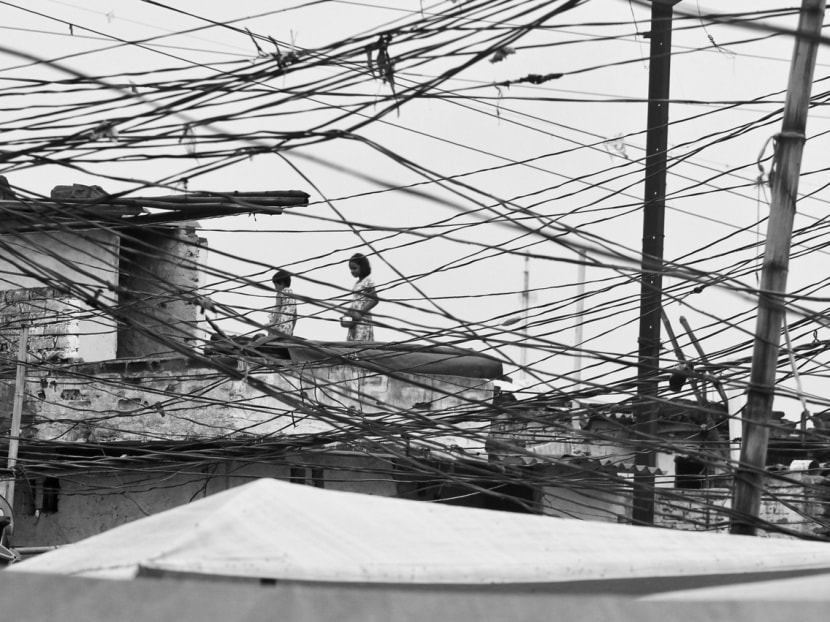Electrifying the Asia-Pacific
Since 2000, Asia and the Pacific region have made significant contributions to global economic growth and poverty reduction. Yet nearly half a billion citizens — mostly in rural and far-flung areas — still have no access to electricity.

Public-private partnerships have brought electricity to 32 million Indian households in the last decade. Photo: Reuters
Since 2000, Asia and the Pacific region have made significant contributions to global economic growth and poverty reduction. Yet nearly half a billion citizens — mostly in rural and far-flung areas — still have no access to electricity.
Three-quarters of these people live in South Asia. Some 70 per cent of Pacific island households are un-electrified, a level similar to sub-Saharan Africa. The lack of electricity and clean cooking options marginalises remote and slum communities, preventing them from stepping on the first rung of the ladder to prosperity.
We can do better.
When Singapore set out as a newly independent nation, among its first tasks was to ensure an adequate supply of utilities such as electricity to ensure the country’s survival. Singapore’s Rural Electricity Programme was launched in 1963, powering the homes of more than 200,000 Singaporeans. With access to a reliable electricity supply, Singapore was not only able to meet its increasing energy demands due to rapid industralisation then, but also better support Singaporeans in receiving basic healthcare and education — seeding the ground for a skilled, productive workforce that has become the backbone of its economic development.
Today, Singapore enjoys 100 per cent electrification, and its grid remains of one the world’s most reliable with an annual average interruption time of less than one minute per user.
The city-state’s success provides many lessons for the region, and Singapore regularly hosts specialised technical- and policy-related courses for officials from all over Asia on capacity building.
More recently, Asia’s emergence as producer and provider of renewable energy technology — with investment in renewables reaching US$160 billion (S$223 billion) last year, or over half the global total — has become a game-changer for energy access.
In particular, solar power, which is low cost and widespread, offers both grid-based centralised solutions as well as decentralised applications such as solar lanterns, solar home systems and solar-powered mini-grids.
This year, three large-scale solar proposals in the Middle East and South America have contracted their solar-generated power for US$0.03 per kilowatt hour, which is cheaper than any other source of energy.
Technological advancements in energy storage, driven by utility power and electric vehicle markets, will also help boost the market for solar energy.
HARNESSING THE PRIVATE SECTOR
In many countries of Asia and the Pacific, extending the electricity grid into remote locations would incur a higher cost than off-grid, or decentralised, options — and this influences long-term energy planning.
Many pioneering private-sector firms have developed decentralised low-cost energy systems at household or village scale such as solar lanterns, biogas or micro-hydro systems, and are rolling out business models with product, process, and distribution innovations. Making these options reliable and scalable requires the private sector to play a greater role in finding the most suitable local energy access solutions and to mobilise innovative finance and business models.
Energy has traditionally been a state-provided utility. Currently, the private sector’s role in the provision of energy access has been limited, accounting for only 18 per cent of total investment. To bring private capital, technology and expertise to energy access, partnerships between public-sector and multilateral financing agencies need to offer the right policies and incentives, including risk mitigation frameworks, loan guarantees and other supportive credit enhancements.
India, for example, has leveraged public-private partnerships in its rural electrification efforts, bringing electricity to 32 million households over the last decade. Local provision of energy can have a catalytic effect, leading to economic growth and increased demand for other products and services that can be met by these firms, leading to growing business opportunities.
Across the Asia-Pacific, rural micro-credit is funding energy access including Bangladesh’s Grameen Shakti, which has funded half a million solar home systems. In Nepal, the development of indigenous technology capacity has lowered equipment costs for biogas and micro-hydro systems.
The potential of private investment in promoting energy access should not be underestimated. The so-called “bottom of the pyramid” energy users currently spend US$37 billion on energy services such as kerosene, batteries or candles, which are often inefficient and more costly than clean alternatives.
To realise this potential, leaders across government, financiers, institutions and the private sector have to come together to share and discuss insights, best practices, challenges and opportunities in enhancing energy access. Multilateral forums such as the inaugural Energy Access Forum, organised by ESCAP and the Energy Market Authority of Singapore at Singapore International Energy Week this week, are necessary for fostering partnerships to expand energy access.
ABOUT THE AUTHOR:
Dr Shamshad Akhtar is the Executive Secretary of the United Nations (UN) Economic and Social Commission for Asia and the Pacific (ESCAP). She will be speaking about Asia’s new energy realities and the implications for regional energy security at the Singapore International Energy Week (SIEW) 2016. She will also be delivering the keynote address for the Energy Access Forum at SIEW.






